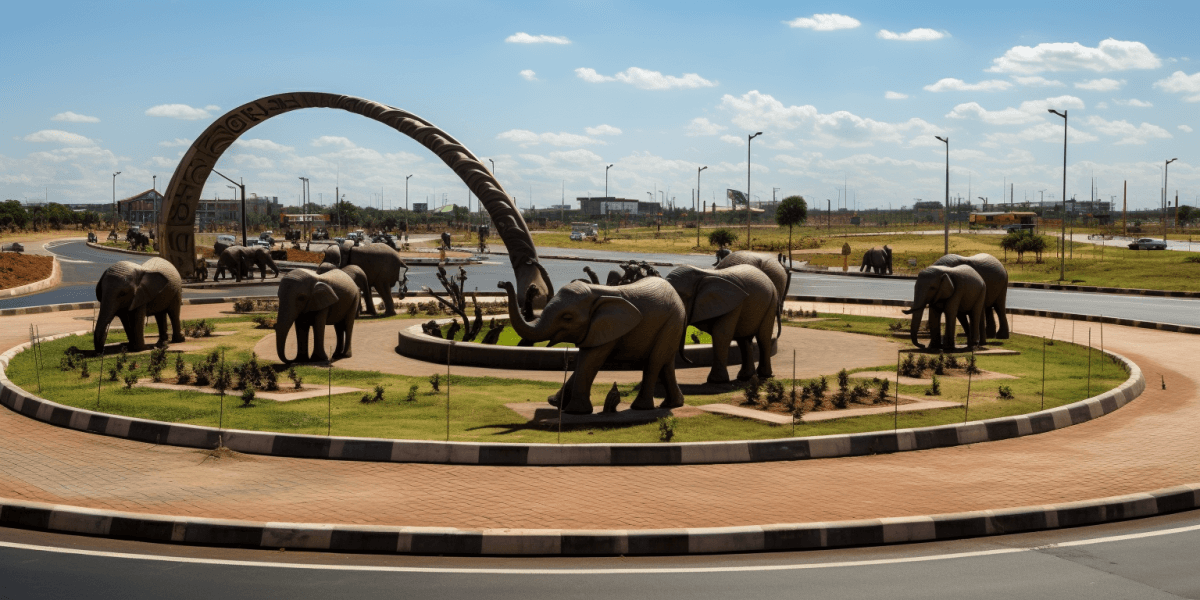The Makupa roundabout, the largest roundabout in Mombasa, Kenya, has undergone a remarkable transformation, thanks to the efforts of the Mombasa Cement Company and Maasai security guards.
What was once a neglected traffic circle has now become a symbol of Mombasa’s dedication to becoming Africa’s premier tourism hub.
READ ALSO: The Largest Roundabout in East and Central Africa
The roundabout, which was adorned with statues of elephants and an array of locally sourced desert rose flowers, had been meticulously redesigned to showcase Kenya’s rich wildlife, flora, and fauna. Imtiaz Sayani, an officer at Mombasa Cement Company, explained that the project aims to capture the essence of Mombasa’s natural beauty.
In addition to elephants, other statues representing various wildlife and marine animals were gracing the roundabouts. Near the Mombasa Sports Club in Ganjoni, statues of camels had also found their place.
The elephant statues, in particular, stood as a testament to Mombasa’s aspiration to become a significant economic player. Additionally, Maasai statues had been strategically placed to depict the Maasai warrior culture and their coexistence with wildlife in the wild.
Maintaining the pristine condition of these newly adorned landmarks was not easy, with a dedicated team of about 20 individuals ensuring daily cleanliness. Security teams had also been deployed to safeguard these cultural assets from vandalism.
The exact cost of this remarkable project remained undisclosed, but rough estimates suggest it exceeded Ksh 2.5 million. The statues themselves were sourced from Nairobi. Tourists and locals alike were encouraged to capture and share their experiences at these roundabouts on social media platforms to promote the beauty of Mombasa.
Elephants Removed From The Makupa Roundabout
However, a cloud of controversy has cast a shadow on this beautification effort. Mombasa’s iconic wildlife sculptures, including the magnificent elephants that graced the Makupa roundabout, were removed from key locations in the city in May of this year.
This decision stemed from a dispute between Mombasa Cement, the driving force behind the beautification project, and the Mombasa County Government.
The dispute arose following a controversial directive issued by the county government, instructing Mombasa Cement to cease its philanthropic activities at public hospitals.
Hasmukh Patel, the company’s owner, had been generously paying the medical and funeral bills of patients in Mombasa’s public hospitals who were unable to afford them.
These sculptures, which had become a defining feature of Mombasa’s central business district, were installed at six main roundabouts, including the Makupa roundabout. The project was a collaborative effort between Mombasa Cement and the previous county government to rehabilitate neglected roundabouts and transform them into attractive tourist destinations.
The decision to remove the sculptures will also affect the famous Kibarani Recreational Park, a significant tourist attraction and the gateway to Mombasa Island.
However, Mombasa Cement announced that they have reached an agreement with the neighboring Kilifi County to relocate the sculptures there.
Despite the dispute, Mr. Imtiaz Sayani, the company’s community relations officer, emphasized that their free feeding program in Mombasa would continue. However, he refrained from commenting on the order to stop paying bills for patients in the county’s public hospitals.
A recent court decision temporarily halted the county’s directive, allowing Mombasa Cement to continue assisting patients unable to pay their medical bills. The situation remains fluid as the company navigates its philanthropic efforts while seeking an amicable resolution with the Mombasa County Government.
In the midst of this controversy, the vibrant and transformed roundabouts of Mombasa still stand as a testament to the city’s commitment to showcasing its natural beauty and cultural heritage to the world.
READ ALSO: Surge in Demand for Nyali Properties



